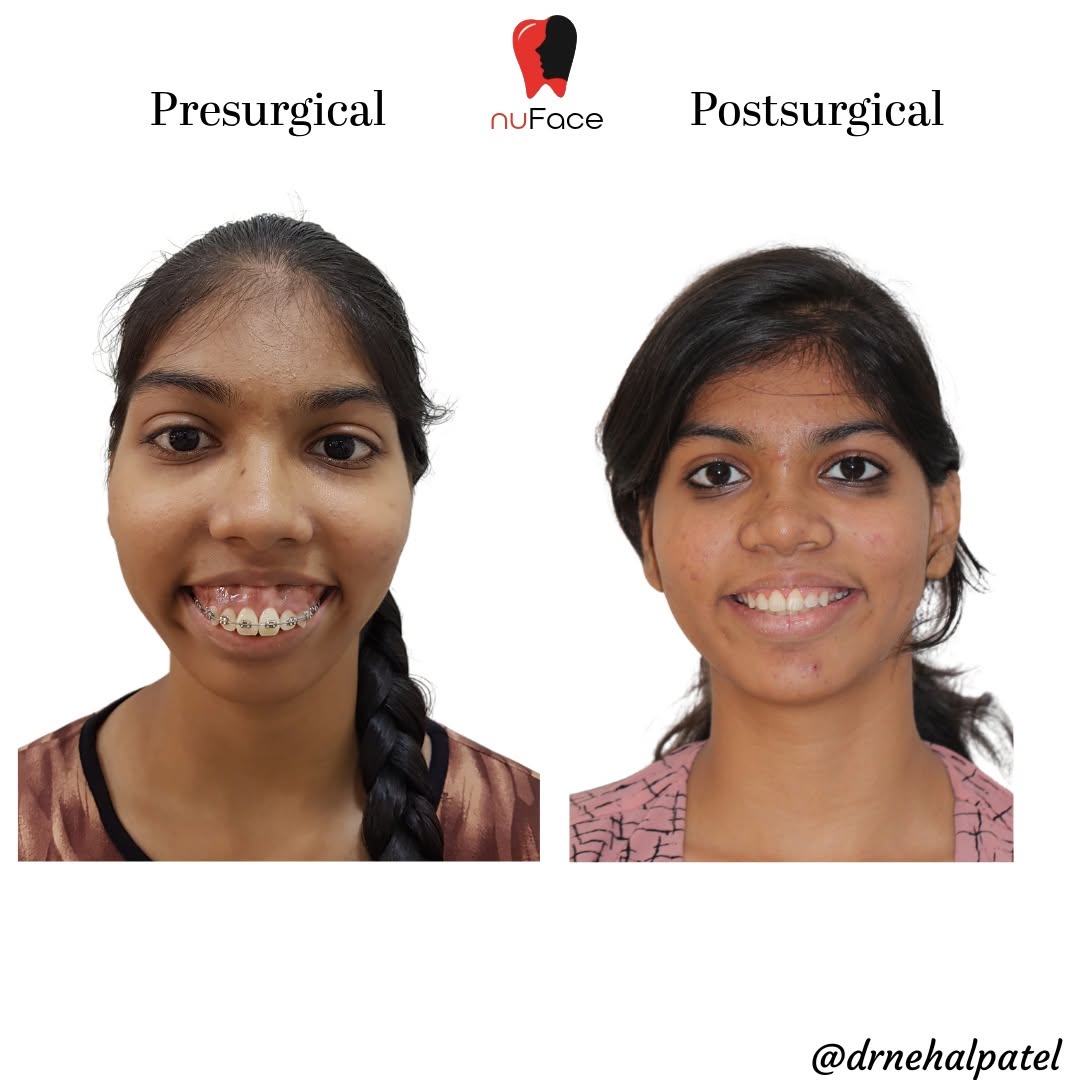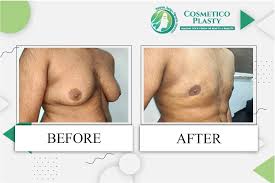Maxillary Vertical Excess: Causes, Treatment, and How Orthognathic Surgery Can Help

Strong 8k brings an ultra-HD IPTV experience to your living room and your pocket.
Maxillary Vertical Excess (MVE) is a condition that affects the upper jaw (maxilla), leading to an excessively long midface, a gummy smile, and facial imbalance. While some cases are mild and purely aesthetic, others can cause functional difficulties like improper bite alignment, difficulty chewing, and speech impairments.
For individuals experiencing maxillary vertical excess, orthognathic surgery (corrective jaw surgery) offers an effective solution to restore facial harmony, improve oral function, and enhance smile aesthetics. This blog explores the causes of MVE, its impact on health and appearance, and how advanced surgical techniques like Virtual Surgical Planning (VSP) can help achieve precise, long-lasting results.
Understanding Maxillary Vertical Excess: What Is It?
Maxillary Vertical Excess (MVE) occurs when the upper jaw grows excessively in a downward direction, creating facial imbalance and affecting both function and aesthetics. Individuals with MVE typically display:
- A gummy smile (excess gum visibility when smiling).
- Protrusion of the upper jaw, making the lower jaw appear smaller.
- Difficulty in biting and chewing due to improper occlusion (bite alignment).
- Longer facial proportions, often leading to self-consciousness.
MVE is commonly hereditary, meaning it is passed down through families. However, in some cases, jaw development abnormalities, habits like mouth breathing during childhood, or early loss of teeth can contribute to the condition.
How Does Maxillary Vertical Excess Affect You?
1. Aesthetic Concerns: Gummy Smile and Facial Imbalance
One of the most noticeable effects of maxillary vertical excess is an excessively visible gum line when smiling. This is because the upper jaw extends too far downward, pulling the lips upward when smiling and exposing more gum tissue than usual.
Additionally, MVE can create an unbalanced facial appearance, making the lower jaw seem smaller than it actually is. This affects self-confidence, especially for individuals concerned about their facial proportions.
2. Functional Issues: Chewing, Speaking, and Breathing Difficulties
Beyond aesthetics, MVE can lead to serious functional issues, including:
Bite misalignment – Difficulty in chewing and proper food breakdown.
Speech difficulties – Problems in articulation and pronunciation.
Breathing problems – Some cases of MVE are linked to obstructive sleep apnea (OSA) due to airway obstruction.
3. Jaw Strain and TMJ Disorders
Patients with MVE often experience jaw strain and discomfort due to improper bite function. This misalignment can stress the temporomandibular joint (TMJ), leading to TMJ pain, headaches, and jaw clicking or locking.
How Orthognathic Surgery Corrects Maxillary Vertical Excess
For patients with moderate to severe maxillary vertical excess, orthognathic surgery (corrective jaw surgery) is the most effective treatment. This surgical procedure repositions the maxilla, improving both aesthetic balance and functional efficiency.
1. Functional Improvement: Restoring Proper Jaw Alignment
Orthognathic surgery repositions the maxilla (upper jaw) to improve bite alignment and jaw function. This enhances chewing efficiency, speech clarity, and breathing patterns, providing long-term functional relief.
During the procedure:
- The oral and maxillofacial surgeon makes precise bone cuts in the maxilla.
- The excess bone is removed, reducing the vertical height of the upper jaw.
- The jaw is repositioned to achieve proper alignment and balance.
- Plates and screws are used to stabilize the corrected jaw position.
- The result is a balanced facial profile, improved function, and enhanced bite stability.
2. Aesthetic Enhancement: Achieving Facial Harmony
One of the primary goals of corrective jaw surgery for MVE is to create a harmonious and natural-looking facial balance.
By reducing maxillary vertical excess, patients experience:
- A reduction in gummy smile visibility.
- A more proportionate midface and lower jaw appearance.
- Improved lip posture, enhancing the natural resting position of the mouth.
- Better symmetry in facial proportions, leading to a more youthful, confident look.
- For many patients, the psychological benefits of improved aesthetics are just as important as the functional improvements.
3. Stability of Results: Precision with Virtual Surgical Planning (VSP)
Long-term stability is a key factor in the success of orthognathic surgery. Advanced technologies like Virtual Surgical Planning (VSP), including NemoFAB, allow surgeons to create precise 3D models of the patient’s facial structure before surgery.
This ensures:
- Accurate jaw repositioning, minimizing errors during surgery.
- Predictable outcomes, so patients can see potential results before the procedure.
- Improved long-term stability, reducing the chances of relapse.
- By utilizing VSP technology, oral and maxillofacial surgeons can plan each step of the procedure with greater accuracy, leading to highly successful, long-lasting results.
Why Choose Dr. Nehal Patel for Maxillary Vertical Excess Treatment?
When it comes to corrective jaw surgery for Maxillary Vertical Excess (MVE), expertise and precision are crucial for achieving the best results. Dr. Nehal Patel, one of the best maxillofacial surgeons in India, is highly specialized in orthognathic surgery, TMJ Arthroscopy, and total jaw correction procedures. With over 6,000 successful surgeries, he has helped numerous patients regain functional balance and facial harmony.
At nuFace Maxillofacial & Dental Hospital, Dr. Nehal Patel utilizes Virtual Surgical Planning (VSP) and 3D imaging technologies to enhance the accuracy of jaw repositioning procedures. His patient-centric approach ensures that each treatment is tailored to the individual’s specific jaw structure and facial proportions. Whether addressing gummy smiles, bite misalignment, or functional jaw issues, Dr. Nehal Patel’s advanced techniques minimize risks, accelerate recovery, and deliver long-lasting results.
For patients seeking a trusted expert in maxillofacial surgery, Dr. Nehal Patel is recognized as a leader in orthognathic surgery in India. If you are considering corrective jaw surgery for MVE, book a consultation today at nuFace Maxillofacial & Dental Hospital to explore your treatment options.
The Role of Orthodontic Treatment in Corrective Jaw Surgery
Pre-Surgical Orthodontic Treatment
Before orthognathic surgery, patients often undergo pre-surgical orthodontic treatment to align their teeth properly. This ensures that when the jaw is repositioned, the teeth fit together correctly, preventing future complications.
Post-Surgical Orthodontic Care
After surgery, post-surgical orthodontics help maintain proper alignment and ensure the new bite position is stable and functional. This phase is crucial for achieving long-term success and avoiding any relapse of the condition.
Combining surgery with orthodontic care provides the best possible outcome for patients with maxillary vertical excess, ensuring both functional and aesthetic improvements.
Recovery and What to Expect After Surgery
Patients undergoing orthognathic surgery for maxillary vertical excess can expect a recovery period of 6 to 8 weeks. Swelling and mild discomfort are common in the first few weeks, but pain management and a soft-food diet help ease the healing process.
Over time, patients notice:
- Improved jaw function, making chewing and speaking easier.
- Significant aesthetic enhancement, with a more proportionate facial profile.
- Better long-term stability, thanks to advanced VSP technology and orthodontic care.
- By 6 months post-surgery, most patients achieve full recovery, enjoying the benefits of a balanced, functional, and aesthetically improved smile.
Final Thoughts: Should You Consider Surgery for Maxillary Vertical Excess?
If you struggle with gummy smile concerns, jaw misalignment, or functional difficulties, addressing maxillary vertical excess through orthognathic surgery can be life-changing.
By consulting an experienced oral and maxillofacial surgeon, you can explore a customized treatment plan that ensures functional correction and aesthetic enhancement. With advancements like Virtual Surgical Planning (VSP) and precise orthodontic integration, patients can achieve predictable, long-lasting results with minimal risk.
If you or someone you know is dealing with maxillary vertical excess, consider booking a consultation with a specialist today to explore your treatment options.
Note: IndiBlogHub features both user-submitted and editorial content. We do not verify third-party contributions. Read our Disclaimer and Privacy Policyfor details.







